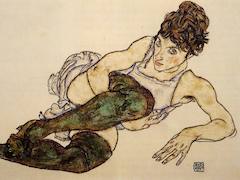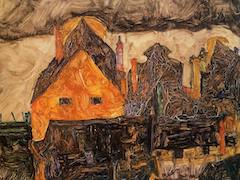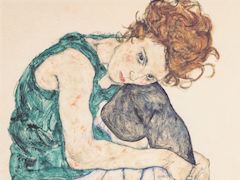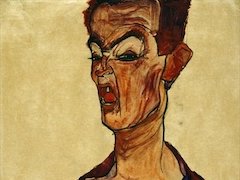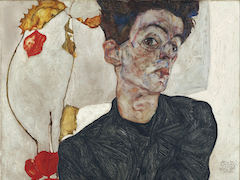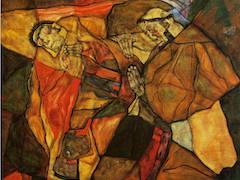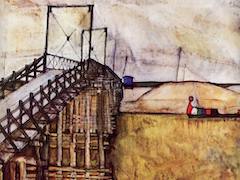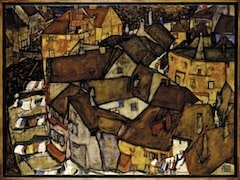Two Little Girls, 1911 by Egon Schiele
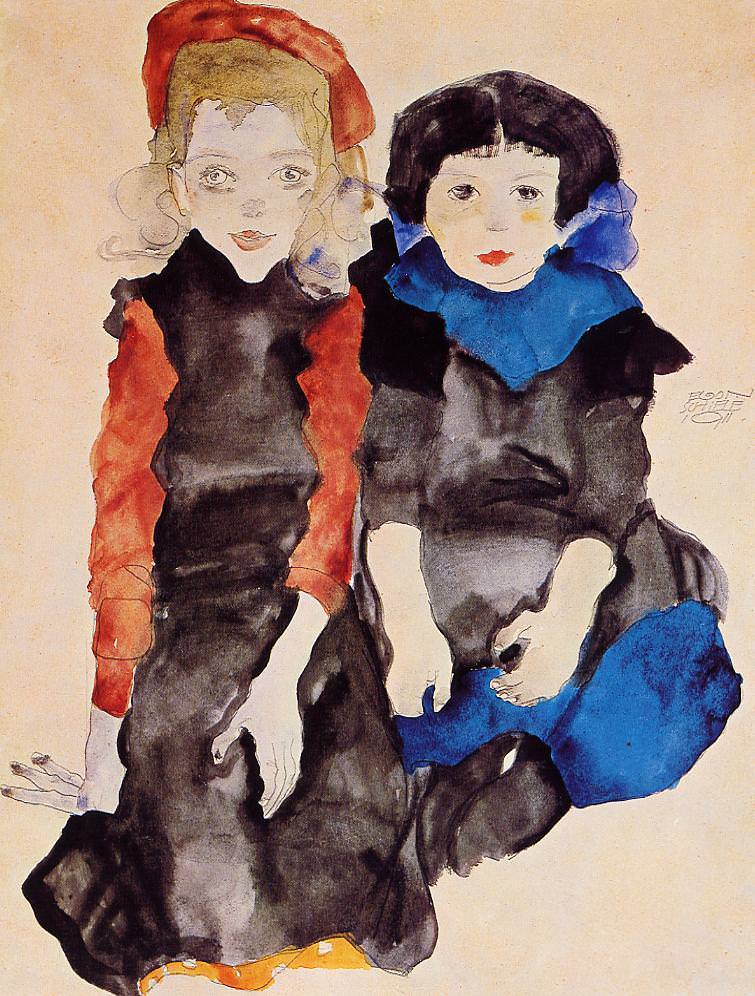
Schiele, in his early twenties, tended to gravitate to the familiar. He himself, his beloved sister Gertrude, and his fledgling girlfriends were his most frequent models. He also readily identified with children. The artist, who described himself as an "eternal child", was in many ways still a boy himself. Certainly his emotional maturity lagged far behind his artistic precocity, making it possible for him to depict puerile mental state that generally elude older artists. The torment of growing up remained very real to him; not only did he still suffer the pangs of puberty, but he found young models far less intimidating than adults.
Children had one other great advantage over mature models in Schiele's early, impecunious days: they could be persuaded to pose for spare change, or even for a bit of candy. The streets of Vienna were teeming with young urchins, and Schiele lured them like the Pied Piper. His friend the artist and writer Paris von Gutersloh gave the following description:
There were always two or three smaller or larger girls in [Schiele's] studio; girls from the neighborhood, from the street, solicited in nearby Schonbrunn Park; some ugly, some attractive, some washed, but also some unwashed. They sat around doing nothing...Well, they slept, recovered from parental beatings, lolled about lazily...their closely cropped or tangled hair, pulled their skirts up or down, tied or untied their shoelaces. And all this they did - if one can call that doing something - because they were left to themselves like animals in comfortable cage, or so they perceived it."
Though Schiele did not shy away from depicting his underage subjects in the nude, it must be said that most of his drawings of children were quite chaste.

